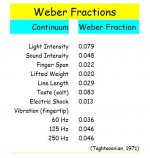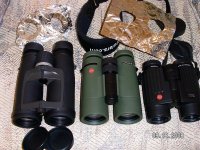Steve, I wasn't referring to FOV, but AFOV. I can't tell much difference between bins with a variance of 20'(or quite a bit more, either) unless I target a neighbor's privacy fence ~150yds. away, and intentionally check it. Don't see how anybody could.
Not directly but statistically you could. The birds provide the random element.
If for example you are looking at birds that could be in any part of the field (say in flight in a flick or bouncing around a tree warbler-style) then the FOV is on balance going to find you more birds by movement in your peripheral vision that you then need to center on and use the magnification and sharpness to identify by field marks. So a wide field and center sharpness are two useful requirements.
Remember that you chance of finding a bird goes as the square of the linear field of view measurement. i.e. a mere change from 393 feet (7.5 degrees) to 430 feet (8.2 degrees) gives you a bigger visible area seen by the bin of 20% (sqr(8.2/7.5). In a random flock that's a 20% better chance of seeing a bird in the wider FOV than the narrower FOV.
You can even see this effect with a novice. I gave my wife the mediocre Winchester 8x32 (with 7.5 FOV) and for the first time she finds finding and tracking birds easy. For novice bins good FOV is a critical factor.
SteveC said:
I understand the concept of the apparent fov, but I sometimes think it is if no more value than twilight factor of relative brightness or something else that is defined by a mathematical relationship regardless of quality. Maybe I ought to go out and do some more serious consideration of the two, but since I don't place too much emphasis there I wonder if it would be of much value. I tend to look for resolution first, lack of edge distortion second, and fov last. Plus that strictly subjective impression my eyes give me. I personally will sacrifice some FOV for some resolution any day.
FOV is real, measurable and comparable between binoculars. Unlike the other measure you quote (which really are useless). And it has real impacts on the birding.
I'm rather the reverse of Steve. FOV is the start and I'm most likely to reject a bin on poor (narrow) FOV even if the other parameters are good.
Of course FOV and AFOV are coupled together too. A bigger FOV with a more magnification gives a bigger AFOV. This seems to be the design style at Vortex. Wide FOV with large AFOV at x8 gives the "big picture feel". I'm sure this is a selling point for their bins (I do like it but big AFOV is not my primary concern). I don't think I'd be happy with Pentax whose design style is narrower, flatter and more edge sharp fields of says 6 and a bit degrees in a 8x). Of course that might just be me.
Another feature that pops up hear is eye relief. Of course what's the point in having a great wide FOV unless I (the eyeglasses wearer) can see all of it. This is rather the problem say with Swift 820 (which I've not tried yet) that has a very wide FOV but a low effective eye relief (13mm usable; 17mm spec) so one doen't see the edge of field.
I find 7.5 degrees FOV is a minimum for me (around 400). Certainly below 6 degrees you both get a toilet roll effect in AFOV at any normal magnifications and you will find bbirds harder to track. One reason I like my (porro, inexpensive and sharp!) EO Raptors is that for 10x bins they have a decent FOV (and an OK eye relief so I see most but not all of it).
The final point is that all of these features are coupled together in the optical design. How do you trade them off against each other for a particaulr task. Birders bins (in general) are wide FOV and tolerate less sharp edges. Other users (perhaps in Japan) are less tolerant of those edges. How you trade off all of the many features (measurable like magnification, FOV, AFOV and less measurable (fraction of sharpfield, edge sharpness, field curvature, edge astigmatism and other distortions, pincushion, CA (transverse and lateral), stray light, transmission, aberrations, etc) depends on your model of the viewer.
So what is the perceptual model of a birder. AFAIK, that hasn't been published though some of the optical companies, most likely Zeiss, will have done work here (they've done it in their ophthalmic optics group for progressive addition lenses). For example acuity drops off away from the center of fixation (quite rapidly). How much to people sacade around the field rather than moving the bins? Do people respond faster to a wider FOV image? What is the impact of shake in a handheld bin (nice work at Cloudy Nights on this). What about acuity through the bin? You are limited by the eye's acuity so that increases in a handheld bin up to x10 but then the FOV drops generally as a magnification increases. So which helps you ID more birds? FOV or magnification? Then that probably depends on the habitat? I prefer Yosemites (x6) in the woodland and x10 Raptors at the shore.
All bins are compromises. They're even compromises on group different uses. And worse than that even in one use (birding) different compromises work better in different habitats. I think one can see why we might not agree on which is The Best Bin(tm)? But those that optimize most might have the best chase of pleasing the most customers.






